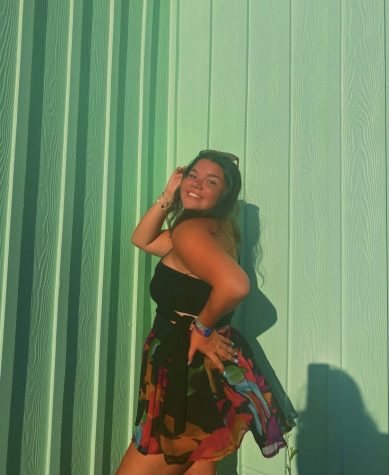Music Now: A Rundown of the Dreampop Genre
December 9, 2022
Thanks to the help of streaming, hundreds of genres and subgenres of music have come to the forefront of mainstream music and become more easily discoverable to music lovers across the globe. Bands and artists whose music was a part of the underground are now more accessible to new generations of listeners, reviving music from the 1950s and beyond.
One of the biggest resurgences of music eras was in the 1990s. The 90s transformed the music scene, with bands like Nirvana, Alice in Chains, and Radiohead paving the way for grunge and alternative bands to enter the musical sphere of your typical music listener. Branching off of popular alternative music was a plethora of subgenres, including punk rock, shoegaze, and even dream pop.
Dream pop is a subgenre of alternative rock that emerged in the 1990s, primarily in the UK. The name gives a hint as to what the genre includes; pop-adjacent music with dream-like qualities, achieved through heavy synths, reverb, and breathy vocals to melodic ethereal sounds. Varying in sounds and textures, not all dream pop is not a hyper-specific sound, but rather an atmosphere. The transcendent vocals and ambiguous instrumentals provide a unique experience with each listen, transporting the listener to a place of pure bliss through the magical soundscapes. The music can vary from delicate vocals with ambient backgrounds to heavy and distorted tracks.
Dream pop was inspired by many influences spanning from psychedelic rock like the Velvet Underground to post-punk icons of the 1980s by the likes of Joy Division, and A.R. Kane, who was the first band to coin the term “Dream pop” to describe their band’s sound. The broad nature of the dream pop sounds leaves room for interpretation. Another genre that is often used interchangeably with dream pop is “shoegaze.” Shoegaze is defined as an “ethereal mixture of obscured vocals, guitar distortion and effects, feedback, and overwhelming volume.” The term came from artists “gazing” at their shoes while constantly using the feedback pedal of their guitars while performing on stage, creating the distortion that the genre is known for. A band that defined the genre is “My Bloody Valentine” with their hit album “Loveless” from 1991. While dream pop and shoegaze share similarities, shoegaze possesses a much more distorted and loud feel, but the two genres can often have a blurred line between them. A great example of this is exhibited by the band “Slowdive,” which mixes the two genres throughout their entire discography, creating the best of both worlds throughout their work.
The quintessential dream pop band would be The Cocteau Twins. The Cocteau Twins are basically synonymous with dream pop. The Scottish band defines their sound through their breathy vocals and atmospheric sound while creating a listening experience like no other. Their music is glimmering with light with hints of dark undertones. Their most famous work is their album “Heaven or Las Vegas” from 1990. It is the epitome of dream pop and utilizes lush sonics, entrancing the listener from start to finish. The genre continued to flourish throughout the 90s, with dream pop classics emerging during the decade. Some notable albums include “Spooky” by Lush, the delicate “So Tonight That I Might See by Mazzy Star, and the more pop-forward “Blind” by The Sundays. dream pop takes many forms, so there is truly an interpretation for everyone. Although not obvious to all, dream pop is intertwined with popular music today and has influenced some of the biggest names in music.
One band that brought dream pop back onto the map and into people’s radars is Beach House. Beach house has almost single-handedly brought dream pop back into the mainstream and onto people’s Spotify playlists. Their hazy and ethereal sound has captured the ears of many through popular tracks such as “Space Song” from their most popular album “Depression Cherry.” Dream pop has also subtly influenced artists such as Lana Del Rey, Weyes Blood, Alvvays, Cigarettes After Sex, and Men I Trust by their use of synths, breathy vocals, and fuzzy production. Living up to its name, dream pop made its mark in the 1990s by attracting pop and alternative listeners with its dreamy soundscapes. Today, it continues to leave traces of its influences in modern music and expand in popularity across the globe.












Amber • Dec 9, 2022 at 3:17 pm
Great read! I really enjoy dreampop and im so glad you covered this
Hannah Keravuori • Dec 9, 2022 at 2:53 pm
Yes Dream Pop for the win .